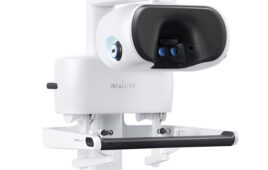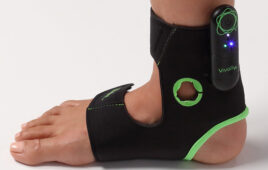
Photo by Victor Freitas on Unsplash
Startups pioneering less-invasive technologies to treat common eye diseases are changing the outlook for both patients and the industry.
A new study by CB Insights revealed that investors have been pouring money into smaller companies in 2017 and 2018, with some FDA approvals to begin marketing their technologies and treatments. These firms are eyeing conditions common among those age 40+, including refractive errors (e.g. near- or farsightedness), cataracts, and retinal diseases like diabetic retinopathy and macular degeneration.
Funding and deals in the eye health space have trended upward over the past five years as well. Last year, there were 114 deals totaling $1.5B in funding. In the glaucoma space, Ivantis raised $25 million in a Series C round of financing to support its Hydrus microstent device. A couple of companies seeking to treat the leading cause of dry eye — meibomian gland dysfunction (MGD) — have raised millions in the past year. Tear Film Innovation, which developed the iLux treatment device for dry eye, closed a $9 million in a Series B round in May. Azura Ophthalmics raised $16 million for MGD therapy in October 2017.
Several companies are working on devices to improve cataract treatment, in which the ophthalmologist removes the clouded lens and replaces it with a plastic intraocular lens (IOL). RxSight, which specializes in adjustable IOL technology to optimize vision after cataract surgery, raised $50 million in 2017. LensGen, which raised $4.4 million in a second tranche of Series A financing in July 2018, is developing an accommodating IOL to correct vision at all distances for patients with both cataracts and presbyopia (i.e. people who need reading glasses). AcuFocus, which raised a $24 million Series H in August, developed a small-aperture IOL designed to also improve vision in a range of distances using the pin-hole effect.
New patents for IOL largely related to cataracts have outnumbered other eye-disease-related patents over the past five years, as well, while the past two years have seen an increase in patents related to refractive errors and dry eye.
“Given the new technologies on the horizon, we expect the pace of investment and disruption to only accelerate,” the CB Insights report says. “Given the pace of innovation within the eye space, treatment options within 5 -10 years could look drastically different than what is being offered today.”
This goes for eye-specific conditions as well as diagnostics and treatments for larger
systemic illnesses, such as diabetes or heart disease. Most of these new technologies are coming from startups or tech players, such as Google, rather than from the eye-care stalwarts.
“To stay ahead of these developments, traditional eye care research and treatment
companies will want to keep close tabs on the newer players in the expanding space,” the report concludes.

![A photo of the Medtronic GI Genius ColonPro polyp detection system flagging a potential sign of colon cancer during a colonoscopy. [Photo courtesy of Medtronic]](https://www.medicaldesignandoutsourcing.com/wp-content/uploads/2024/04/Medtronic-GI-Genius-doctors-268x170.jpg)


